Agriculture Reference
In-Depth Information
Figure 18. Ratio of calculated water amount returning to the Kinu and
Kokai river during irrigation period (%)
98%
of the equivalent
amount of intake water
at Sanuki D.W.
Paddy fields
84%
of the equivalent
amount of intake water
at Okamoto
3.3 Creating a secondary natural environment with wetlands and water networks
Paddy fields provide a valuable habitat for living creatures. Shallow ponded water
over black soil easily becomes warm in summer and its combination with fertile soil
serves as an incubator and fodder for creatures — from micro-organisms to higher forms
of life such as amphibians, fish and birds. In addition, irrigation and drainage canals
provide a network of water ways serving the same function as animal trails in a jungle.
Irrigation ponds connected with paddy fields through canals provide a habitat and place
of refuge for aquatic creatures during the non-irrigation period. Scattered coppices and
groves in the countryside also provide a habitat and place of refuge for terrestrial
creatures during the non-irrigation period. Figure 19
shows various creatures and their
habitats on a typical bird's-eye picture of a countryside paddy field area in Japan.
Figure 19. Various creatures and their habitats in typical countryside paddy field area in Japan
Place for blowing and emerging for
dragonflies
Place for spawning and growing for
fish and amphibians
Place for rest and feeding for birds
Forests alongside farm road
serve as place for rest
Fish move from river
Path for fish moving from river
Habitat for fish
Place for breeding and feeding
for fish, insects and amphibians
Place for breeding and feeding for
fish, insects and amphibians
Place for rest and feeding for birds
Small drainage canal
Path for fish moving from
main drainage canal
Habitat for fish
Source:
MAFF, (2005).































Search WWH ::

Custom Search